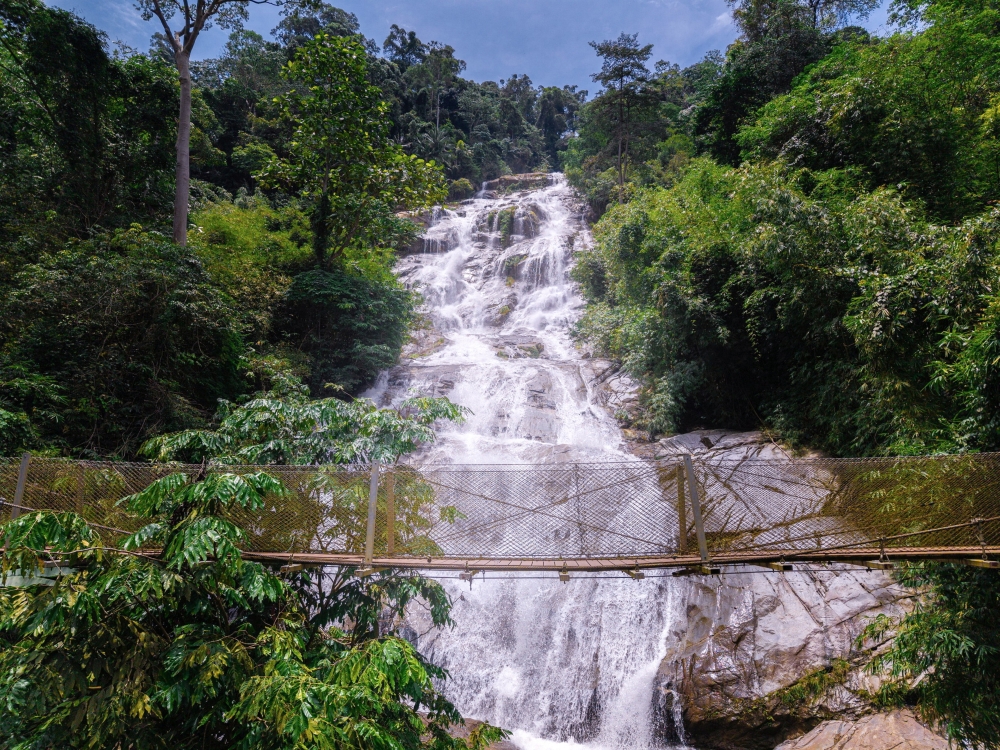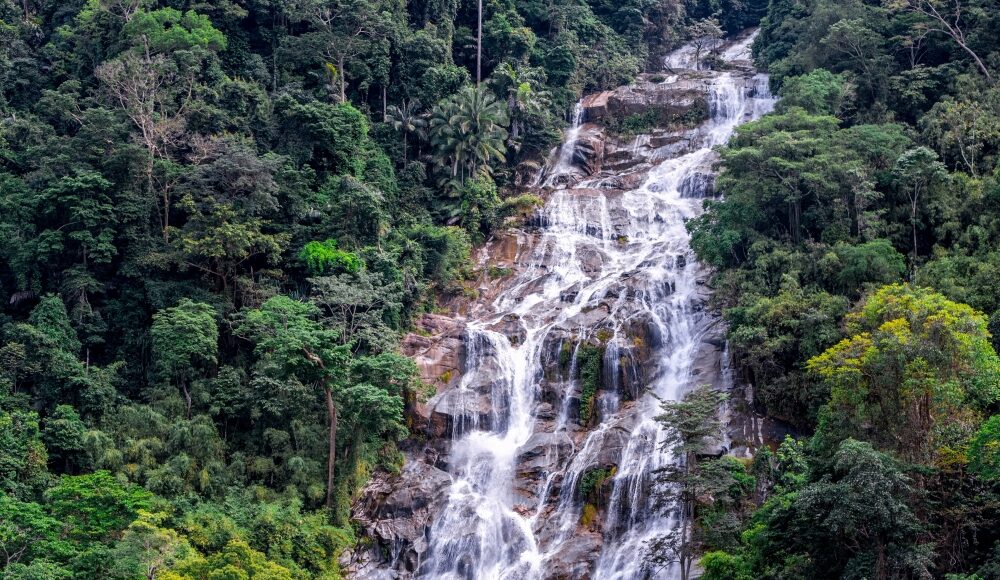TAPAH, May 11 — Cascading from a height of about 850 metres, Lata Kinjang Waterfall — one of the highest waterfalls in Southeast Asia — is clearly visible when travelling along the North-South Expressway, almost beckoning road users to pause for a moment before continuing their journey.
Located about 18 kilometres from the town of Tapah, this multi-tiered waterfall flows swiftly from the peak of the Titiwangsa Range. Yet, it is more than just a scenic natural attraction — it holds deep significance for the Semai Orang Asli community, who have inhabited the area for nearly a century.
According to Rani Ulin, the Tok Batin or headman of Kampung Orang Asli Lata Kinjang, the waterfall has been a vital lifeline for his community since their forefathers settled there in the 1930s.
“For generations, many of our activities have centered around the waterfall. We gather forest produce, carry out farming and fishing activities, and make use of the various natural resources available around the falls.
“Now in our fourth generation, the waterfall remains the heart of our livelihood. As long as it continues to flow beautifully, so too will our spirit,” he said when met by Bernama recently.
A view of the Lata Kinjang waterfall, which is a popular location for visitors, during Bernama’s recent survey of the Eco-Forest Park May 11, 2025. — Bernama pic
Sharing the origin of the waterfall’s name, Rani, 53, said “lata” means waterfall while “kinjang” is a type of deer, symbolisng the harmony of the surrounding nature, which has remained well-preserved despite being located not far from Perak’s capital Ipoh.
Now known as Taman Eko Rimba Lata Kinjang (Lata Kinjang Eco Park), the area has been under the management of the local Orang Asli community since February 2022 through Lata Kinjang Orang Asli Cooperative Bhd (KOALKB), which was established to improve the livelihoods of the Orang Asli there. So far, the cooperative has provided job opportunities to 25 villagers.
“We’re very happy to offer job opportunities to the youth here. They no longer need to migrate elsewhere to earn a living. Instead, they can serve and develop their own village.
“It’s not just about providing employment, but we’ve also become more confident in competing in the tourism sector. Tourism has become a major catalyst for our village economy,” said Rani, who is also KOALKB secretary.

A view of the Lata Kinjang waterfall, which is a popular location for visitors, during Bernama’s recent survey of the Eco-Forest Park May 11, 2025. — Bernama pic
He hopes his community’s efforts will continue to receive support from all relevant parties so that Lata Kinjang remains a natural treasure even for future generations.
“We want the younger generation here to feel proud of their ancestral land. As long as we can preserve the beauty and heritage of Lata Kinjang, there will always be opportunities for future generations to enjoy and benefit from it.
“We hope tourists and everyone who visits (Lata Kinjang) will help protect its natural environment. Development is important but balance and sustainability are the keys to ensuring that Lata Kinjang continues to bring benefits in the future,” he said. — Bernama





